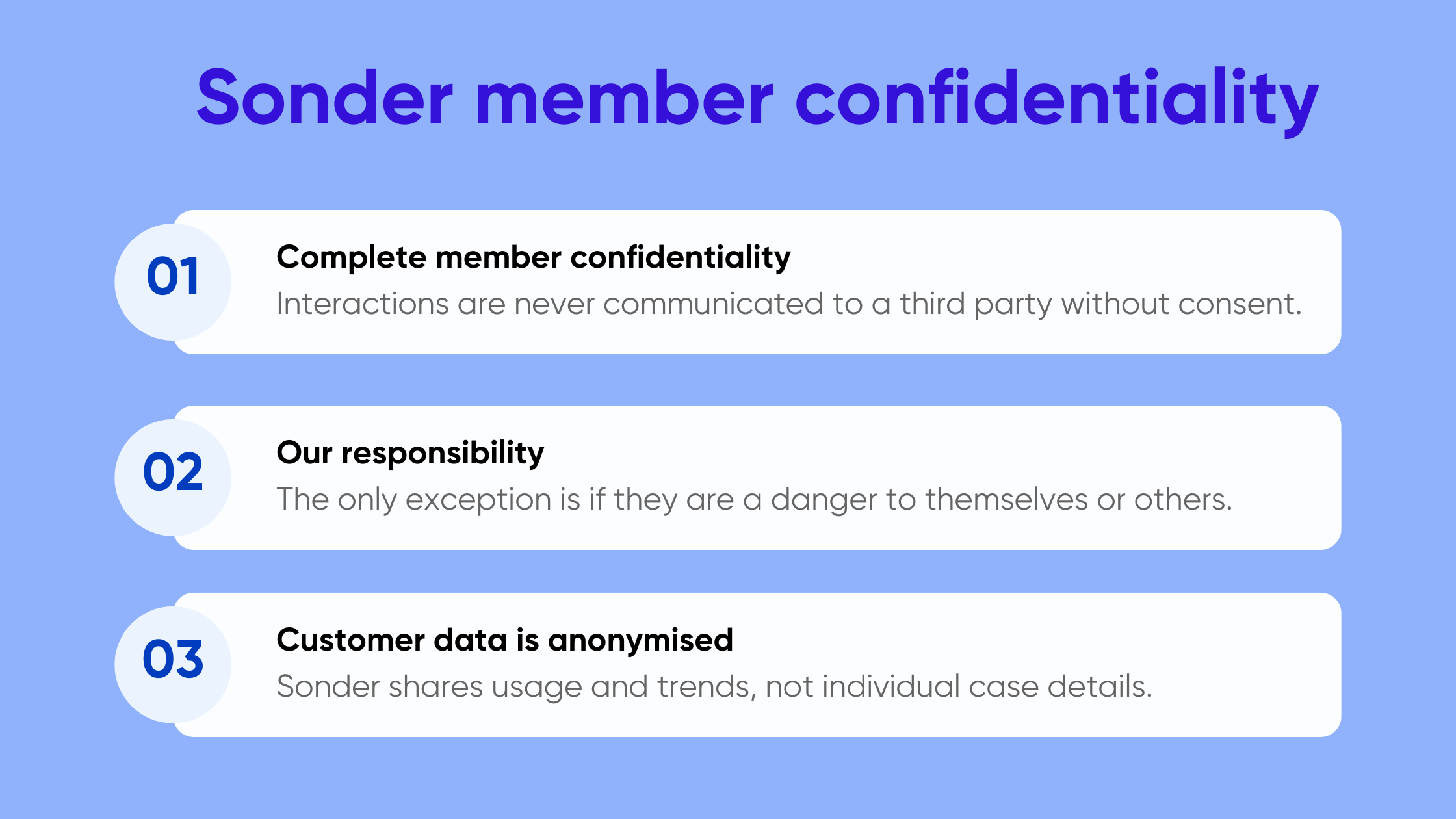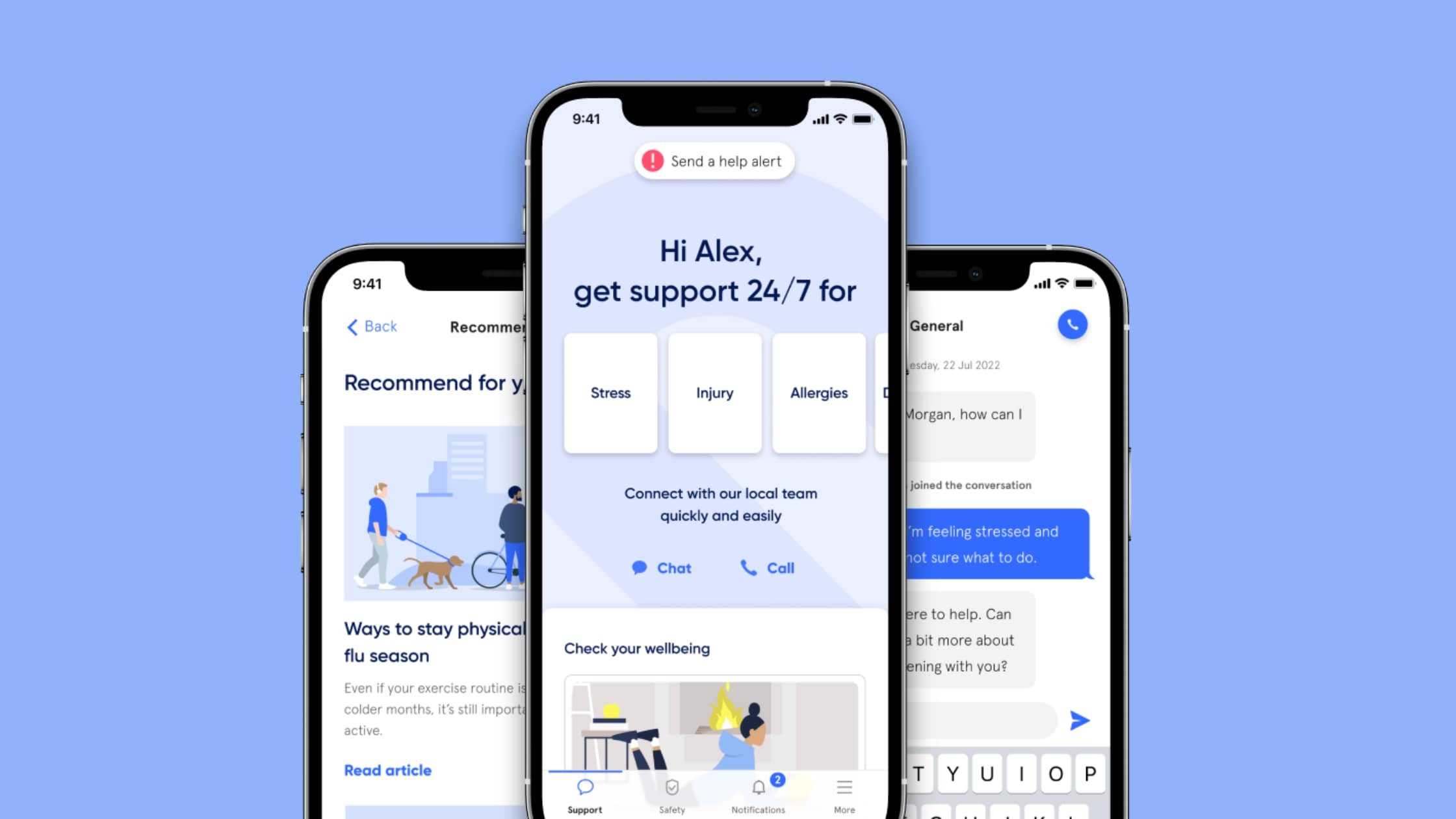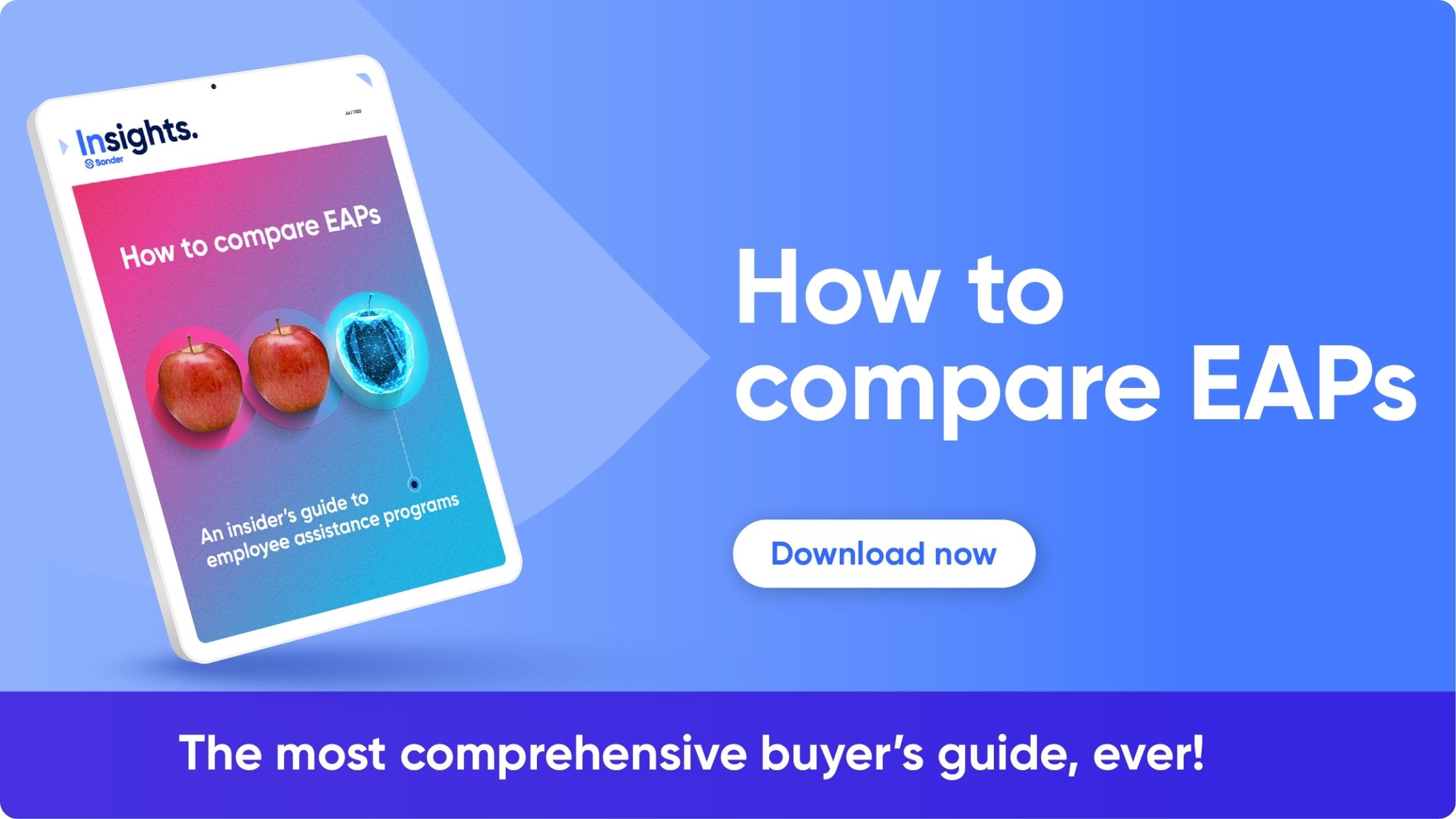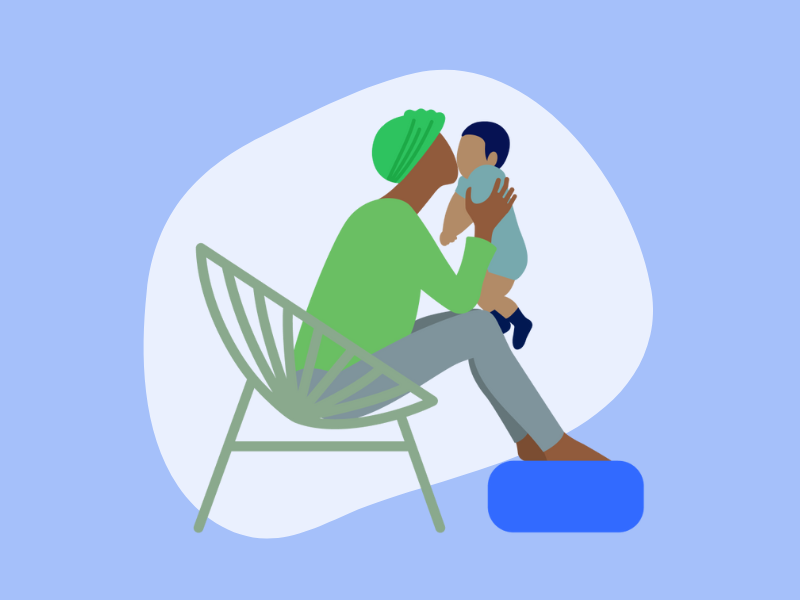The TL;DR:
- EAPs (Employee Assistance Programs) usually extend beyond the individual employee to include immediate family members, acknowledging the impact of personal issues on professional performance.
- Typically, family members are able to access mental health support and counselling and can gain referrals to third-party legal and financial experts through EAPs.
- Employers must ensure confidentiality, accessibility, and awareness of the EAP’s scope for families to foster trust and maximise utilisation.
Whether you’re rolling out your first Employee Assistance Program (EAP) or considering a modern EAP alternative, your employees are likely to ask, “Do EAPs cover family members?”
It’s a fair question, especially when you consider the link between personal challenges and an employee’s performance at work. In the wake of the COVID-19 pandemic, the lines between home and work are increasingly blurred, with 30% of Australians work at home for most of their week-twice as high as prior to the pandemic.
Your people are looking for proactive ways to safeguard the health, wellbeing and safety of not only themselves but their loved ones. In this blog, we’ll walk you through the scope of care for EAPs, explain whether family members are covered by EAPs and arm you with practical tips for maximising utilisation and uptake.
Understanding EAP scope: Beyond the employee
In most cases, the services offered by EAPs are able to be accessed by an employee’s immediate family members (usually for family members over the age of 18).
EAP providers understand that employees’ personal and professional lives are interconnected, and family members play a pivotal role in helping employees navigate personal and work-related challenges. This approach acknowledges that the welfare of their loved ones can significantly impact an employee’s wellbeing.
While each program and provider will have its own set of inclusions and exclusions, EAPs typically allow immediate family members-which can include spouses, children, parents, grandparents, grandchildren, and siblings-to access support.
What is typically covered for immediate family members under an EAP?
In the case of traditional EAPs, immediate family members gain access to the same levels of support as employees, including:
- Mental health support: Just as with employees, immediate family members may have access to counselling services to address mental health issues, stress management, or personal crises.
- Navigating life challenges: This includes support for parenting, bereavement, or domestic violence situations, acknowledging that these personal issues deeply affect the employee’s performance and mental wellbeing.
- Legal and financial advice: Family members can receive guidance or referrals to third-party providers on matters like estate planning or debt management, indirectly benefiting employees by reducing their stress levels.
How to increase uptake of EAPs: practical tips for boosting employee and family member engagement
As an employer, you need to consider how you’ll ensure the uptake and utilisation of any EAPs you roll out. When it comes to ensuring whole-family engagement, there are three key factors you need to consider:
- Confidentiality: Employees and family members need to be assured that what is shared in counselling sessions will remain confidential and that no identifiable details will be shared with the employer.
- Accessibility: Employers should ensure that their EAP provider offers comprehensive access for family members, which may involve 24/7 support or multi-lingual services.
- Awareness: Regularly inform your workforce about the EAP’s scope and the services available to team members, including family member eligibility, through internal communications.
Let’s dive deeper into these considerations and equip you with practical tips for boosting engagement and uptake of EAPs, from employees to their family members.
Confidential support for the whole family
The principle of confidentiality is the cornerstone of any EAP, crucial for ensuring trust and safety among those who access its services. When extending EAP benefits to include immediate family members, it’s important to ensure that strict confidentiality protocols are followed to boost trust and engagement.
Counselling sessions and EAP support services explore sensitive issues that family members and employees are navigating, from relationship breakdowns to mental health challenges and beyond. In order to maximise the value of these services, open and honest self-disclosure is required-something that is hard to do is confidentiality isn’t guaranteed.
For example, here at Sonder (an EAP alternative challenging the traditional model), we ensure that all personal information is kept confidential, meaning nobody can access this information without that individual providing informed consent.
“We cannot share identifiable health data without explicit documented consent.”
Dr Jamie Phillips
Medical Director and Head of Member Support, Sonder

In practical terms, ensuring confidentiality for family members means offering:
- Private consultations: All family members can expect the same level of privacy as employees, ensuring that details of their counselling sessions remain between them and their counsellor.
- Secure records: Information from sessions will not be disclosed to the employer or other family members without consent and written permission, safeguarding personal details and fostering a safe environment to seek support.
- Proactive trust building: Clearly communicate your EAPs privacy and confidentiality policies to build trust with family members, encouraging uptake without fear of stigma or repercussions.
When comparing EAP providers, it’s crucial that you look for a program that prioritises confidentiality. In the case of Sonder, we clearly communicate our approach to member confidentiality to boost trust in our holistic preventative care platform.
Not only does this give members valuable peace of mind, but our comprehensive scope of support helps to drive a 20x lift in uptake when compared to traditional EAPs.
“As someone who suffers with health anxiety, and has young children, Sonder provides me confidence and comfort to have on hand medical advice 24/7. Every member of staff has always been incredibly helpful, kind, and gone above and beyond to ensure the safety and medical needs of my family are met. Thank you.”
Sonder member
Boosting the accessibility of EAP benefits for families
Accessing EAP services should be straightforward and stress-free for employees and their immediate family members. Ensuring easy access to these services is critical in providing comprehensive support and fostering a culture of wellness that extends beyond the workplace into the family unit.
Here are a few steps you can take to facilitate family access to EAP services:
- Step-by-step access guides: Provide clear, simple instructions for accessing EAP services, available online and in physical formats within the workplace.
- Multiple access points: Offer various ways to access EAP services, including phone, email, online portals, or mobile apps, catering to different preferences and needs.
- Anonymous self-referral: Allow family members to initiate contact with the EAP independently, ensuring privacy and encouraging utilisation without employees needing to be involved.
One of the advantages of opting for an EAP alternative (like Sonder) is the ability to leverage tech to boost accessibility, particularly for family members. Our user-friendly mobile app gives family members and employees 24/7 access to support, with our triage process taking just 15 seconds on average to connect members with the right support.

“I had no wait time and spoke to a registered nurse within minutes. My local doctor’s wait time is normally about 40 minutes and then results in no appointment… The service is outstanding and I felt very cared for.”
Sonder Member
Increasing awareness of EAP services
Employers play a pivotal role in extending EAP benefits to employees’ families and ensuring everyone understands the services and scope of support available.
Low awareness of EAP services is incredibly common, especially in the case of traditional EAPs. In a 2020 survey of frontline doctors in NSW, more than 50% of doctors didn’t know how to access their own EAP.
Issues around awareness become amplified when EAP services are extended beyond the workplace to include immediate family members. But, there are practical steps you can take to boost uptake, awareness and engagement, including:
- Proactive outreach: Regularly remind employees and their families about the EAP and how to access its services through newsletters, emails, or meetings.
- Demos and training sessions: Break down knowledge gaps and empower employees and their families to access support with free, regular training sessions and on-demand demos that demystify the process of accessing your EAP.
- Showcase impact and success: Leverage anonymised social proof (such as testimonials and quotes) to demonstrate the benefits of engaging with EAPs.
At Sonder, our complete employee platform is available to employees and their families 24/7 via an all-in-one mobile app. With a focus on preventative care, we allow members to seek support after hours with live chat options helping to boost uptake. In fact, 55% of members wouldn’t have reached out or sought support without Sonder.
The way forward with Employee Assistance Programs and their alternatives
Want to learn more? Dive deeper into the world of EAP alternatives and discover how they can transform your organisation with our ultimate EAP buyer’s guide.
- Learn how to compare vendor offerings
- Discover what makes EAP alternatives different
- Gain insider tips and statistics
- Write a convincing business case

Want to learn more?
Ready to experience a modern approach to employee care? Contact Sonder today to discover how our platform can benefit your organisation.



